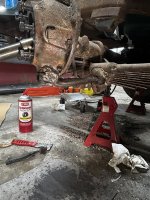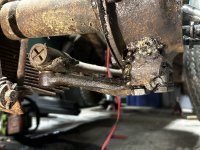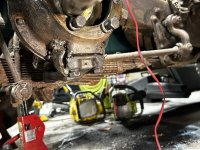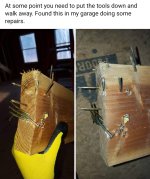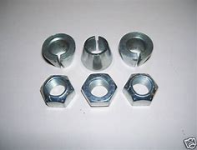dekeeb
Sharpest Tool
Yeaaah, this looks just fine. While tearing down my 55 pickup ahead of a frame swap, I came across this wonderful conglomeration in the front end steering. I snapped a few photos to capture the artistry of this repair. After soaking all this goodness in, I combed through my parts and service manual and I'm having a difficult time finding the proper parts listing and a diagram of the knuckle's connection to the lower steering arm where it attaches to the connection rod. Can someone point me to the proper reference so I can find replacement parts? Although it may be hard to see from the photos, the lower arm is connected to the knuckle via three bolts in two different sizes. The the bolt with the largest head was not completely seated prior to Sparky completing his old world welding magic. After discovering this mess, I'm feeling fortunate I was able to safely load the truck onto a flatbed to get my truck home.

